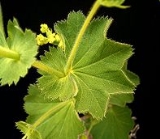
Alchemilla mollis
Encyclopedia

Herbaceous
A herbaceous plant is a plant that has leaves and stems that die down at the end of the growing season to the soil level. They have no persistent woody stem above ground...
perennial plant native to southern Europe
Europe
Europe is, by convention, one of the world's seven continents. Comprising the westernmost peninsula of Eurasia, Europe is generally 'divided' from Asia to its east by the watershed divides of the Ural and Caucasus Mountains, the Ural River, the Caspian and Black Seas, and the waterways connecting...
and grown throughout the world as an ornamental garden
Garden
A garden is a planned space, usually outdoors, set aside for the display, cultivation, and enjoyment of plants and other forms of nature. The garden can incorporate both natural and man-made materials. The most common form today is known as a residential garden, but the term garden has...
plant. It grows 30 to 45 cm (11.8 to 17.7 in) tall, with leaves that are palmately veined, with a scalloped and serrated margin. The chartreuse
Chartreuse (color)
Chartreuse is a color halfway between yellow and green that was named because of its resemblance to the green color of one of the French liqueurs called green chartreuse, introduced in 1764...
flowers are held in dense clusters above the foliage.
According to some accounts, Lady's Mantle has been used for centuries as a herbal remedy. According to other authorities it has never been used medicinally, but has been confused with two species that have a history of medicinal use: A. alpina (Alpine lady's mantle) and A. xanthoclora.
The plant is often grown as a ground cover, and is especially valued for the leaves in wet weather, as the water beads and sparkles on the leaves. This is due to the remarkable dewetting properties of the leaves, whereby the contact force between the water and the leaf is so disfavoured that a thin layer of air penetrates the solid-liquid interface. These beads of water were considered by alchemists to be the purest form of water. They utilised this water in their quest to turn base metal into gold. Hence the name "Alchemilla".

